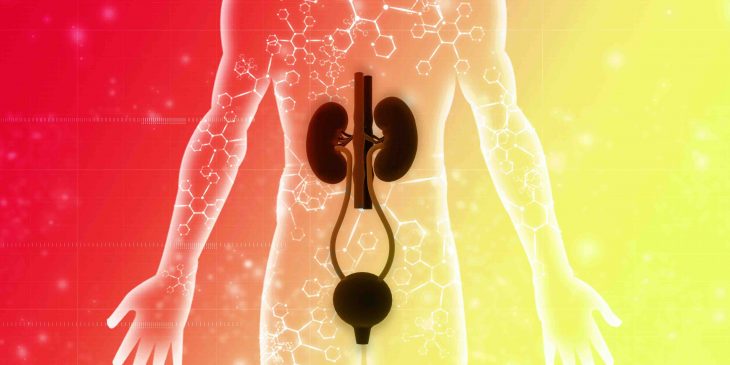
The excretory system, often overshadowed by its flashier organ counterparts, silently works to keep our bodies in balance and rid us of waste. This remarkable system, comprised of various organs, holds some intriguing secrets that are bound to make you appreciate its importance. So, let’s embark on a journey of discovery as we uncover 15 fun and fascinating facts about the excretory system.
What is the excretory system?
The excretory system, often grouped with the urinary system, is responsible for removing waste products from the body. Its main components include the kidneys, ureters, bladder, and urethra.
Our excretory system is essentially a balancing act.
Our excretory system works hand in hand with other bodily systems, such as the respiratory and circulatory systems, to maintain homeostasis. Together, they keep our body’s internal environment in perfect balance.
Our kidneys are multitaskers.

Just like our livers, the kidneys are essential organs in the excretory system. The kidneys come in a pair. These bean-shaped powerhouses work tirelessly to filter waste products and excess water from the blood, ensuring our body maintains a delicate balance.
Kidneys are also pint-sized powerhouses.
Beyond waste removal, they also regulate blood pressure, manage red blood cell production, and balance electrolytes in the body. Although each kidney is roughly the size of a fist, they filter about 120-150 quarts of blood daily, effectively purifying the body’s entire blood supply multiple times a day.
They also consist of a network of nephrons.
Each kidney contains about one million nephrons, tiny filtering units that remove waste and excess substances from the blood.
Over an average lifetime, the kidneys will process over one million gallons of water.
When it comes to water filtration, our kidneys are the true champions, tirelessly working day and night to maintain our body’s fluid balance. To put things into perspective: one million gallons of water is equivalent to the size of a small lake.
We produce about 1-2 liters of urine every day.
Here’s a fun pee-riffic fact about our excretory system: on average, a person produces about 1 to 2 liters of urine per day. That’s enough to fill a large water bottle. However, it’s nothing compared to the amount that we have to drink per day – 15.5 cups (3.7 liters) a day for men and 11.5 cups (2.7 liters) a day for women.
Our ureter is a gravity-defying organ.

The ureters are tubes that transport urine from the kidneys to the bladder. Surprisingly, they can move urine against the force of gravity! Even if you stand on your head, your urine does not flow back up.
To pee, there must be harmony.
The muscles of the bladder and the urethra work together in perfect harmony to control the release of urine. When it’s time to go, they contract and relax to allow the smooth flow of liquid gold. It’s almost like a dance.
Every person’s pee is different.
Our urine is unique to us. Its composition can provide a wealth of information about a person’s health, diet, and lifestyle.
Temperature can affect the rate of peeing.
Typically, a person’s urine flow runs from 10 ml to 21 ml per second. However, women range closer to 15 ml to 18 ml per second. The rate of urine production also depends on several factors like hydration levels and temperature. In colder climates, urine production decreases.
The first modern flush toilet bowl was invented by the godson of Queen Elizabeth I.

We owe a debt of gratitude to Sir John Harington, who introduced the modern flush toilet back in 1596. Before Sir John Harington’s invention, the concept of a flush toilet was virtually unheard of. Though toilet paper was already in use, people relied on more primitive methods, such as chamber pots or communal outhouses.
Sir John Harington’s association with Queen Elizabeth I likely played a role in the widespread adoption of his invention. The queen herself found the flush toilet to be quite amusing and installed one in her residence at Richmond Palace.
The human bladder can expand more than 6 inches.
The human bladder, a hollow muscular organ, can hold up to 600-800 millimeters of fluids – about the size of a soft drink can – before the urge to urinate becomes too strong. As it holds, it expands to accommodate the fluids until it sends signals to the brain that it is full. That said, we do not recommend holding in your urine as it can result in UTIs.
Our excretory system regulates minerals.
The excretory system plays a crucial role in maintaining our body’s electrolyte balance. It helps regulate the levels of sodium, potassium, calcium, and other electrolytes in the blood.
The skin is also part of the excretory system.
Sweat glands excrete sweat, which contains water, salt, and other waste products, helping to cool the body and maintain salt balance. The pores on our skin effectively excrete waste and excess sodium.
Was this page helpful?
Our commitment to delivering trustworthy and engaging content is at the heart of what we do. Each fact on our site is contributed by real users like you, bringing a wealth of diverse insights and information. To ensure the highest standards of accuracy and reliability, our dedicated editors meticulously review each submission. This process guarantees that the facts we share are not only fascinating but also credible. Trust in our commitment to quality and authenticity as you explore and learn with us.


